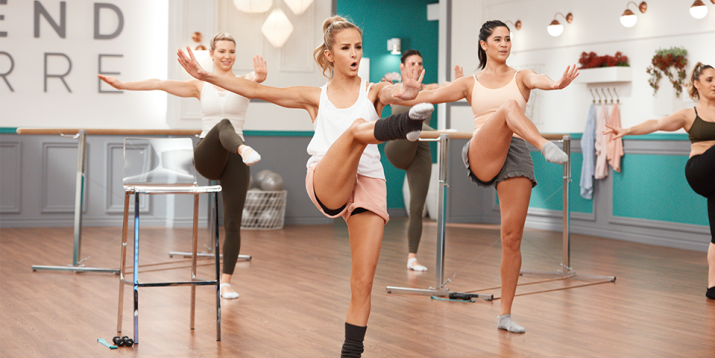If You’re Doing a Barre Workout, Do You Need Extra Cardio?

Barre workouts offer benefits such as toning, strength, and stability, but does barre count as a cardio workout?
And is it enough cardio for weight loss, or do you need to add extra cardio to your workout schedule?
It depends on your goals — here’s why.
Is Barre an Aerobic Exercise?
Yes, a barre workout can have aerobic benefits. Aerobic exercise is a type of continuous, rhythmic cardio exercise that relies primarily on oxygen for energy.
And while a barre workout may not leave you gasping for air like a Tabata class, you’ll be moving fluidly through the full workout.
But the key benefit of barre is strength endurance, says Caroline Pilcher, ACE CPT, AFAA, PN1, a Chicago-based Tier 3+ personal trainer at Equinox. (Your tired legs and shaky muscles will agree.)
Barre workouts work muscle groups you don’t traditionally work in other classes, and the dance-inspired moves help improve stability and balance, says Pilcher.
How Many Calories Does Barre Burn?
Calculating the calories burned during any exercise depends on a number of different factors including your weight, age, fitness level, and body composition.
According to the MapMyFitness calorie calculator, a 150-pound person can burn around 400 calories per hour in a barre class.
By comparison, a 150-pound person would burn around 545 calories in one hour of circuit training, or 682 calories in an hour of kickboxing.
But the calorie burn also depends on the level of intensity — and that can vary widely between barre workouts.
An intense barre workout like Xtend Barre, for example, is likely to burn more calories than a low-intensity barre class.
Do Any Barre Workouts Count as Cardio?
Yes, barre counts as cardio — but its effectiveness depends on the workout.
“You can tell it’s cardio once you’re breathless, and you remain breathless — basically when you’re moving nonstop for more than a minute at a time,” explains Pilcher.
When you’re just starting out, you can expect a lot of starting and stopping while you watch the instructor and try to learn the movements, so your movement might not be as constant or fluid.
On the flip side, you may find a barre class more challenging — and it may raise your heart rate more — if you’re just getting started with fitness.
Once you master the different moves and combinations, you may be able to tackle a more intense barre class — and those can raise your heart rate and give you a better cardio workout.
Xtend Barre, for example, incorporates fast-paced moves for a cardio workout.
If I’m Doing a Barre Workout Program, Do I Need Extra Cardio?
The American Heart Association recommends getting 150 minutes of moderate-intensity cardio exercise per week, or 75 minutes of vigorous cardio exercise.
So whether you need extra cardio on top of your barre program depends on how much time you plan to devote to barre.
If you need more cardio minutes each week, squeeze in extra steady-state cardio by doing an incline walk on a treadmill, a bike ride around your neighborhood, or a low-impact cardio workout.
In barre, you’re working on smaller muscles, balance, and coordination; steady-state cardio is a great complement, Pilcher says, since it burns fat and works your heart.
If you’re short on time — or you’re looking to increase your aerobic capacity and burn more fat — you may want to supplement your barre workouts with vigorous high-intensity interval training (HIIT).
Or try the Xtend Barre workouts on BODi, which offer a 30-minute cardio mix of Pilates and ballet barre.
The bottom line: Barre classes provide a cardio workout and can also help you build strength endurance, a key component of fitness.
So there are plenty of great reasons to hit the barre.
But if you’re looking to ramp up your calorie burn or increase your cardiovascular fitness, look for a barre workout with a higher-intensity format — or add some HIIT days to your weekly workout plan.


